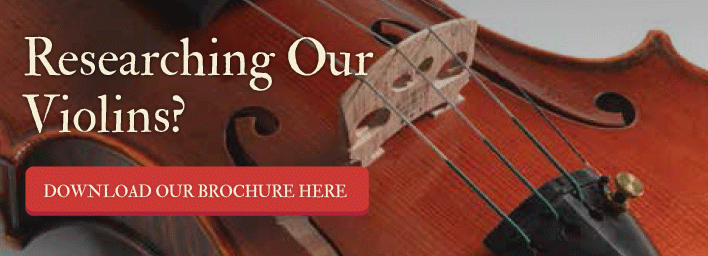Violin Repair - When To DIY And When To Ask A Professional

From time to time, your violin will need various types of maintenance repairs. The nature of the instrument itself, the materials used in its construction, and its supreme delicacy combine to make occasional repairs a normal occurrence. You can certainly limit repair necessities by taking good care of your violin, but you can’t always prevent accidents or environmental changes that can affect its structural and playing integrity.
Many violinists wonder if some repairs can be done at home. And if so, which ones are relatively easy to accomplish, and which ones should never be attempted by a novice. But, the answers really depend on the aptitude of the individual, the specific repair, and the quality of the violin. These guidelines can help you ascertain whether you can do it yourself (DIY,) or whether you should contact a professional luthier.
Before You Start
Honestly, the value of your violin is the biggest factor to consider. If you’ve been playing on a professional violin that is extremely valuable, there’s really only one option. Even for minor repairs, take your violin to a professional luthier. There may be certain tasks you can do on your own, but it’s simply not worth the risk.
However, there is a strong tradition among serious musicians that calls for caring for your instrument yourself. Knowing intimately all the parts, pieces, and quirks of your violin is a matter of pride, but you don’t want that pride to lead you toward a fall.
New students and beginners should take their violins to a luthier for most every repair. But, if you’ve been playing for years and are very familiar with your violin, there are some small jobs that you can perform yourself.
Keep in mind your aptitude for woodworking. Because the violin is crafted from specific tonewoods, most repairs involve intricate woodworking techniques and specialized tools. If you don’t have the greatest carpentry skills, trust a professional. Think about it like this: You may be able to sew a seam properly, but you wouldn’t grab your needle and thread to give yourself stitches for a serious wound on your body, right? Know your limitations.
Acceptable DIY Fixes
Before outlining the areas that you can DIY, there are a few rules to remember:
- Never try to fix something unless you know exactly what you’re doing
- Never use any sort of carpenter’s glue or epoxy compounds—Hide glue only! A luthier uses hot hide glue, which isn’t readily available for DIY repairs.
- Be prepared to pay a professional a double rate to correct your fix if it doesn’t work
These items can safely be addressed by novice musicians. However, make sure that you follow the proper steps for the repair, and use the right tools. Fittings are technically not part of the instrument itself, so if you have the knowledge and ability, these things can be repaired on your own:
- Cracked Tailpiece—Do not, under any circumstance try to re-glue a crack on the body of your violin. However, you can use hide glue to re-glue a crack in your tailpiece.
- Open Seams—Again, not cracks! But if a seam separates, you can use hide glue to fix it temporarily. Indeed, the features of hide glue foster “crackling” which allows the instrument to be repaired. You’ll still eventually need to have a luthier re-glue the seam correctly if you use non-heated liquid hide glue. It creeps remorselessly so the excess will need to be removed, and it doesn’t hold as well.
- Attaching or Removing a Fine Tuner—use caution.
- Chinrests and Fingerboard—you can tighten, loosen, replace, or adjust the chinrest yourself and re-glue the fingerboard in place.
- String Replacement—actually all musicians need to know how to perform string replacements and it’s a good idea to learn this skill within the first year.
- Peg Holes—you can drill a new hole in your peg for the string, but do not attempt peg box repairs. It is too easy to make a mistake on the box, which can be incredibly costly to replace, even if it is possible.
- Cracked pegs—you can glue these yourself, but make sure they are completely dried before replacing and reusing them.
- Bridge Adjustments—you can replace your bridge, but remember; the soundpost will probably have to be re-set, so it’s best to simply allow a luthier to do it.
Take it to an Expert
Cracks on the body of your violin should be repaired by a professional luthier. And never try to change the neckset or ream new pegholes in the peg box. Other luthier-level repairs include:
- Deep Scratches/Varnish repair
- Soundpost adjustments
- Nut replacement
- Damage to the scrollbox (peg box)
- Warping
You can keep your violin in top condition with a little care and maintenance, but when it comes to repair work: when in doubt, always consult a professional before performing the work yourself.


